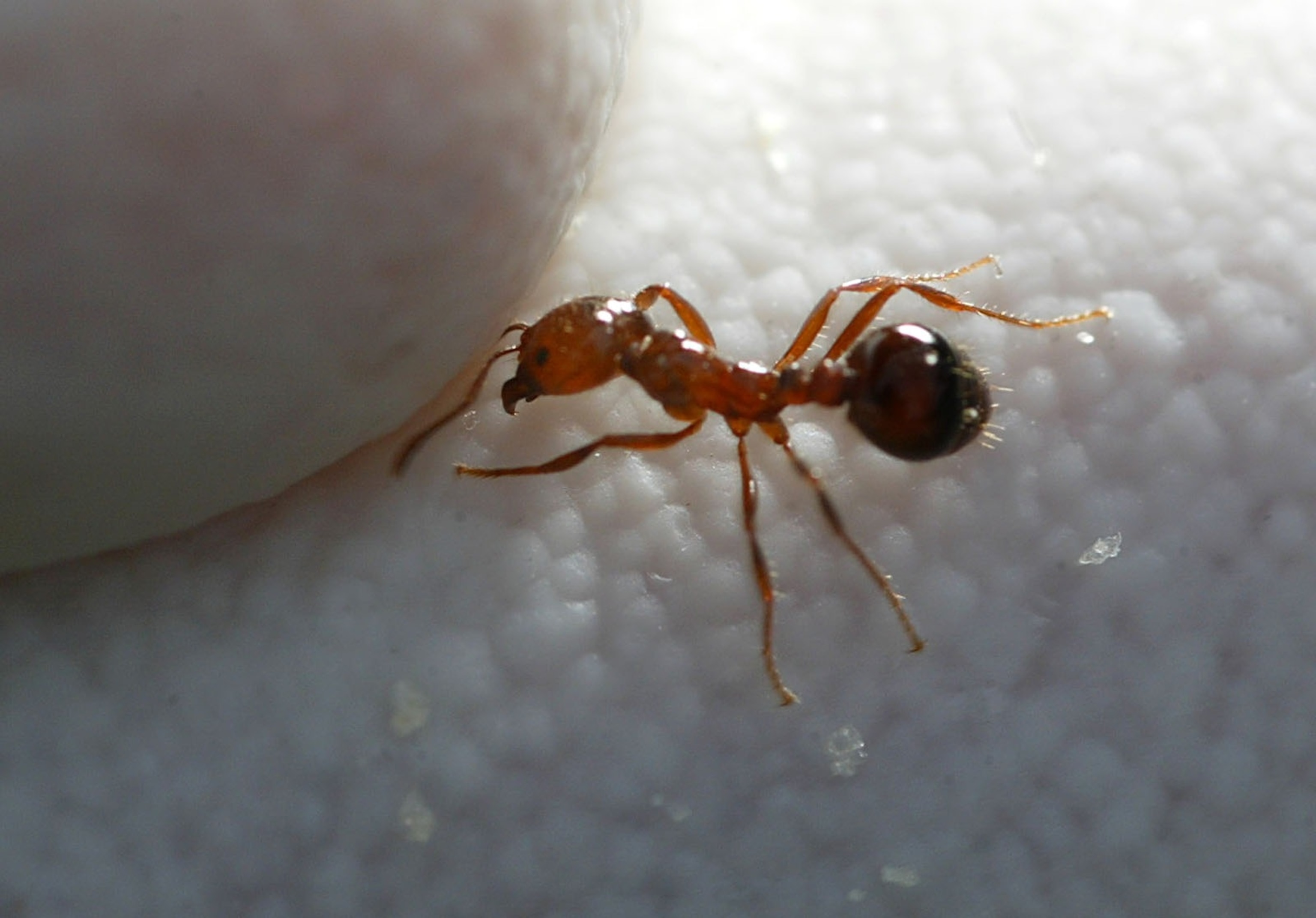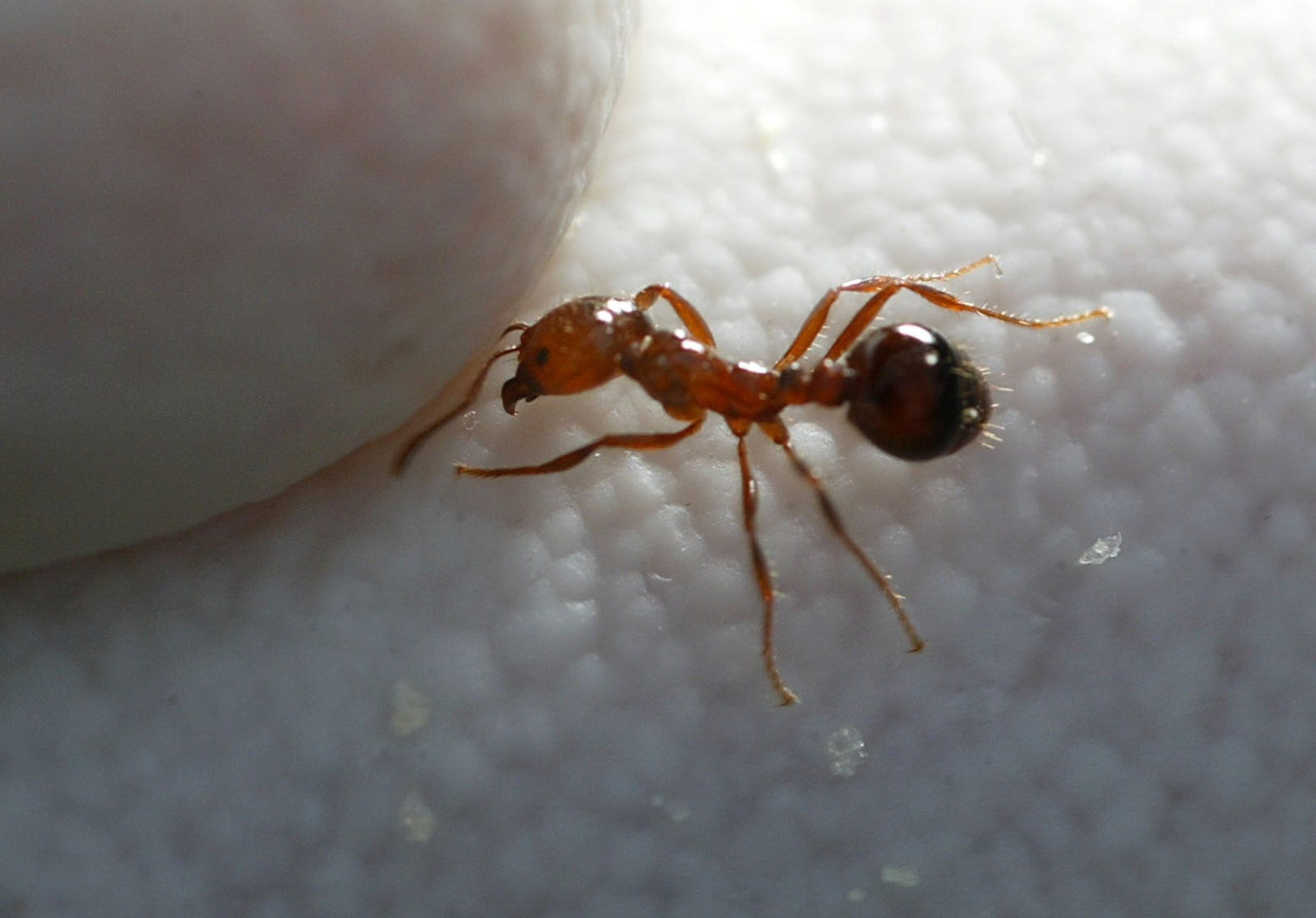Agricultural officials in Southern California are battling an active infestation of red imported fire ants that are “highly aggressive in nature,” and pose a risk to California’s agricultural economy.
The infestation occurred at a private property in Montecito, in Santa Barbara County, according to a recent press release from the Santa Barbara County Agricultural Commissioner’s Office.
Located over 90 miles north of Los Angeles, Montecito is best known as a celebrity enclave with Oprah Winfrey, Ellen DeGeneres, Prince Harry and Meghan Markle among the town’s residents.
Officials did not name the owners of the private property.
Venom released from the ants’ stings can cause “painful pustules on the skin, and can be particularly dangerous, even fatal, to sensitive groups or those with an allergy to the venom,” officials said in the July 18 release.
Red imported fire ants, Solenopsis invicta, pose “an immediate threat” to California’s agricultural economy because they require a quarantine of nursery products, officials said.

A closeup of a fire ant on the glove of Charlie Cassidy, Field Operations Manager with the Orange County Fire Ant Authority, found in a fire ant mound on La Grima Street in Mission Viejo, CA, Feb. 25, 2004.
Mark Boster/Los Angeles Times via Getty Images
The ant species is native to South America but has established populations in parts of Southern California, particularly in Los Angeles, Orange, and Riverside Counties. The first recorded presence of the species in California was in 1984.
Siavash Taravati, an entomologist and integrated pest management advisor with the University of California’s Cooperative Extension offices, noted the distinction between this species of ants and ants native to California.
Native fire ants and argentine ants appear similar to red imported fire ants in size and color but the quickest way to differentiate them is by their “aggressive behavior,” Taravati told ABC News.
The ants’ stinging behavior is hazardous to fieldworkers and infestations can clog irrigation systems and damage electrical wiring, Taravati said.
The presence of red imported fire ants is known to increase the cost of fruit picking in the region, according to Taravati, due to the health dangers associated with the species.
The ants can also threaten wildlife and displace native ant species, Taravati said.
This is the only known active infestation in Santa Barbara County, according to officials, who said there are currently no red imported fire ant quarantines in place.
The infestation is believed to have originated from a nursery stock shipped from Riverside County in September 2023, which was infested by the red ants and spread to the surrounding property.
Santa Barbara County Agricultural Commissioner’s Office staff are conducting regular surveys of the impacted property and determining appropriate treatments by a licensed and registered pest control business, according to the release.
Officials are working in collaboration with the California Department of Food and Agriculture, the University of California Cooperative Extension (UCCE), and Riverside County Agricultural Commissioner’s Office staff.
Red imported fire ants (Solenopsis invicta), native to South America, have been causing havoc in Southern California since their introduction in the 1990s. These highly aggressive ants are known for their painful stings and destructive behavior, posing a threat to both humans and wildlife.
Efforts to control the red imported fire ant infestation in Southern California have been underway for years, as authorities work to prevent the spread of these invasive pests. One of the most common methods used to control fire ants is the application of bait treatments, which are designed to attract ants and kill them off slowly. These baits contain insecticides that are specifically targeted at fire ants, minimizing the impact on other beneficial insects.
In addition to bait treatments, biological control methods have also been utilized in the fight against red imported fire ants. One such method involves introducing natural enemies of the ants, such as parasitic flies and nematodes, to help reduce their populations. These natural enemies can help keep fire ant numbers in check without the need for chemical pesticides.
Another approach to controlling red imported fire ants is through the use of physical barriers, such as ant-proof fencing or barriers made of materials that ants cannot easily climb over. These barriers can help prevent ants from entering homes and other structures, reducing the risk of stings and damage to property.
Community outreach and education programs have also played a crucial role in controlling red imported fire ants in Southern California. By raising awareness about the dangers of these pests and providing information on how to prevent infestations, authorities hope to empower residents to take action against fire ants in their own neighborhoods.
Despite these efforts, controlling red imported fire ants in Southern California remains a challenging task. The ants are highly adaptable and can quickly rebound after treatment, making ongoing monitoring and management essential. Continued research into new control methods and technologies is also needed to stay ahead of these invasive pests.
In conclusion, while red imported fire ants continue to pose a threat in Southern California, efforts are underway to control their populations and minimize their impact on the environment and public health. By utilizing a combination of bait treatments, biological control methods, physical barriers, and community outreach, authorities are working towards a future where these aggressive ants are no longer a major concern in the region.



